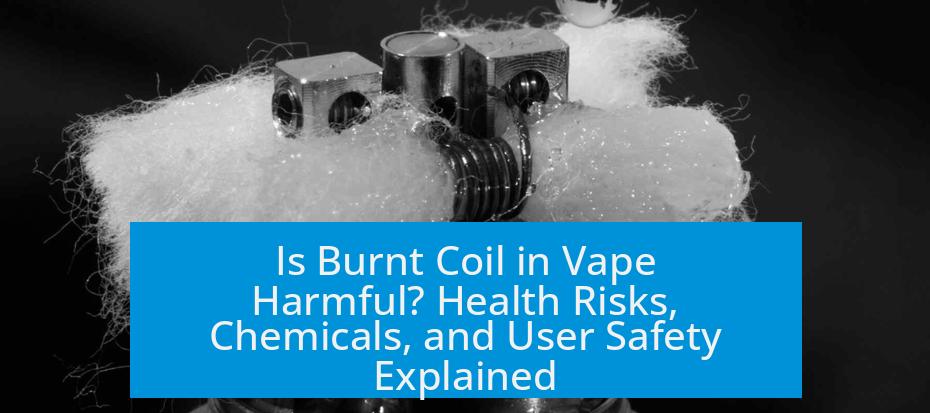Is Burnt Coil in Vape Bad for You?
Burnt coils in vape devices are harmful due to the release of toxic metals, carcinogens, and other dangerous chemicals when the wicking material burns. Continued exposure poses health risks beyond unpleasant taste and may result in serious complications.
Harmful Chemicals Released by Burnt Coils
When vape coils burn, the cotton wick and metal components decompose. This releases metals and carcinogens associated with the burnt wicking material, commonly cotton. Testing reveals that “dry hits” — where the wick runs dry and the coil overheats — emit elevated levels of these toxic substances.
In addition to heavy metals, burnt coils produce other harmful byproducts. These chemicals can irritate the respiratory tract and contribute to long-term health problems when inhaled. Even occasional “hits” on a burnt coil risk ingesting these toxins.
Ingredients in E-liquids and Their Safety
E-liquids typically contain propylene glycol, vegetable glycerin, nicotine, and flavorings. The safety of inhaling vapor depends heavily on the purity of these ingredients. Use of USP-grade (pharmaceutical quality) substances is essential.
Some flavorings contain diacetyl or acetyl propionyl, chemicals linked to lung damage when inhaled regularly. These compounds, which impart buttery flavors, are not safe for vaping and may worsen effects if combined with burnt coil chemicals.
User Experience and Health Effects
- Burnt coils give a harsh, repulsive taste that often deters users.
- Despite the unpleasant flavor, addiction to nicotine may drive some to continue vaping burnt coils.
- Prolonged use of devices with burnt coils has caused severe throat swelling, ear inflammation, and difficulty speaking in rare but serious cases.
One user reported hospital treatment after consistently inhaling dry hits from a burnt wick, highlighting the real danger of ignoring coil maintenance.
Proper Use and Coil Maintenance
Burnt coils primarily result from incorrect device use or neglecting to replace coils in time. Dry hits occur if the wick has insufficient e-liquid, causing it to char.
Proper airflow is critical; an obstructed air path can lead to unintended coil burning. Ensuring no blockages and changing coils regularly minimizes risks significantly.
Long-term Exposure and Risk Assessment
The human body effectively detoxifies many toxins from occasional exposure. However, chronic inhalation of burnt coil toxins can accumulate harm. While exposure at low levels may not cause immediate damage, it is unwise to assume safety over extended periods.
Statistically, other hazards often pose greater risk. Yet, avoiding burnt coil use completely reduces inhalation of metals and carcinogens, improving long-term respiratory health.
Secondhand Vapor and Exposure
Studies show vapes produce negligible secondhand smoke during normal use. The tiny particles in exhaled vapor fall below detectable limits for many tests.
Significant toxic emissions arise mainly during forced dry hits in controlled testing environments, not standard user conditions.
Financial and Addiction Factors
Some users continue vaping burnt coils due to financial constraints or addiction, despite clear health warnings. Coping strategies include refilling pods or modifying devices, but these often increase exposure to harmful substances.
Key Takeaways
- Burnt coils release toxic metals and carcinogens harmful when inhaled.
- Dry hits from burnt wicks produce dangerous chemicals beyond unpleasant taste.
- Addiction and poor device maintenance drive continued exposure to burnt coil toxins.
- Regular coil changes and proper airflow prevent burning and reduce health risks.
- Long-term exposure to burnt coil toxins can cause serious respiratory harm.
- Secondhand vapor risks are minimal except during intentional dry hit scenarios.
- Users should avoid vaping burnt coils and prioritize coil upkeep for safety.





Leave a Comment